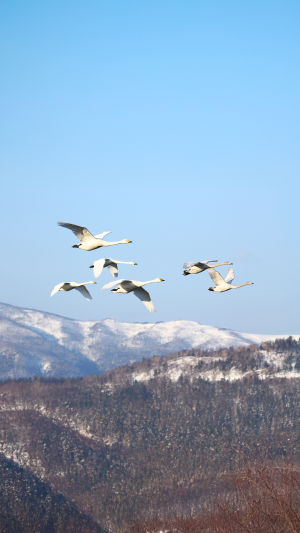Imagine flying thousands of miles every year without any maps, compasses, or GPS devices. No app, no signals—just instinct and nature's hidden tools.
This is the incredible reality for migratory birds, which make long, often perilous journeys across continents with astonishing accuracy. But how exactly do they do it?
Let's take a deep dive into the natural navigation systems of migratory birds, uncovering the secrets behind their impressive migratory feats.
<h3>The Challenge of Migration</h3>
Migration is one of the most demanding tasks in the animal kingdom. Birds travel vast distances to find better climates and food sources, sometimes crossing oceans, deserts, and mountain ranges. The stakes are high—mistakes can mean exhaustion, starvation, or death.
So how do these creatures find their way when there's no GPS guiding them? It turns out, birds rely on an extraordinary combination of natural cues and biological abilities.
<h3>The Sun and the Stars: Celestial Navigation</h3>
One of the oldest navigation tools birds use is the sky itself.
<b>Daytime navigation with the sun</b>
During the day, many birds orient themselves by the position of the sun. They use an internal clock to compensate for the sun's movement across the sky, which allows them to maintain a consistent direction.
<b>Nighttime navigation with the stars</b>
At night, birds like warblers and thrushes navigate by the stars. Experiments have shown that these birds can recognize star patterns and use the rotation of constellations around the North Star to guide their flight paths.
This celestial navigation is a built-in GPS, evolved over millions of years.
<h3>Earth's Magnetic Field: Nature's Compass</h3>
Perhaps the most fascinating piece of the puzzle is the birds' ability to sense Earth's magnetic field.
<b>A magnetic map inside their heads</b>
Many migratory birds possess specialized cells that contain magnetic minerals, like magnetite, which act like tiny compasses. These cells help birds detect the direction and intensity of the magnetic field, giving them a natural sense of where north, south, east, and west are.
<b>Light-sensitive proteins</b>
Recent research suggests birds may also use proteins called cryptochromes in their eyes to “see" magnetic fields as visual patterns, giving them a mental map overlay during flight.
This magnetic sense is so precise that birds can detect even small shifts in the magnetic field, guiding them over oceans and deserts where visual landmarks are scarce.
<h3>Landmarks and Environmental Cues</h3>
While celestial and magnetic navigation are vital, many birds also rely on familiar landmarks and environmental signals.
<b>Visual landmarks</b>
Rivers, mountains, coastlines, and even human-made structures help birds stay on course during migration. Young birds often learn these routes by following experienced their elders.
<b>Olfactory clues</b>
Some species, like pigeons, use their remarkable sense of smell to identify specific scents carried by the wind, which helps them navigate toward their destination.
<h3>The Role of Genetics and Learning</h3>
Migration is partly hardwired and partly learned. Some birds are born with an innate sense of direction encoded in their genes, while others refine their routes through experience.
Studies show that juvenile birds, even those raised without their elders' guidance, can instinctively start migrating in the correct direction. However, their precision improves with age and experience, indicating a mix of instinct and learning.
<h3>Why Understanding Bird Navigation Matters</h3>
As climate change and habitat loss threaten migratory routes, understanding how birds navigate becomes crucial for their conservation. Scientists are studying these natural systems to predict how changes in Earth's magnetic field or weather patterns might affect migration success.
Moreover, unraveling the mystery of bird navigation inspires human technology, from improving GPS systems to developing new ways of sensing magnetic fields.
Next time you see a flock of birds flying south or north, take a moment to appreciate the incredible natural navigation happening above you. These feathered travelers embark on journeys guided by the sun, stars, magnetic fields, and learned knowledge—without a single gadget.
Have you ever witnessed a migratory flock in action or wondered how they know where to go? Share your experiences and thoughts—nature's navigators have stories worth telling!





